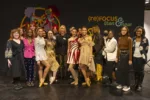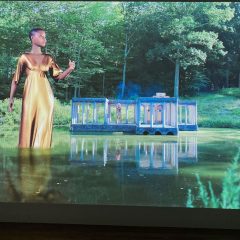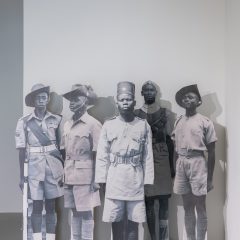Matthew Higgs was there! When it happened! It changed his life! “It” was Joy Division, the pioneering post-punk band. And the Brit, who is now director of White Columns, the influential alternative space in New York, says his experience as a 14-year-old, from following, hanging out with, and listening to Joy Division even before they were BIG, was LIFE-CHANGING for the working class lad who grew up in Manchester.
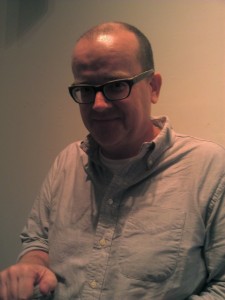
“It was the greatest experience of my life,” he said of one of the JD performances he attended. “I knew it was historic.” At the time he was publishing a music fanzine, Photophobia. These days, he himself is the subject of an internet fanzine, The Matthew Higgs Society, based in Philadelphia.
Higgs was speaking to a crowded room at the University of the Arts Wednesday, July 6, the talk a part of a series of summer art talks for the MFA program. Roberta and I were both there to hear Higgs and also to attend the opening of the student show, which we had juried.
The 46-year-old curator, artist, write and publisher spoke so quickly in his English accent that the room was utterly silent with people straining to catch what he was saying. Part of what he said was that he learned was about the importance of community–from how Joy Division shared its royalties among all its members and how they plowed the income back into their club.
Two years later, Higgs became equally passionate about art. At 16, “My interest in art surpassed my interest in music.” His desire to know ever more about whatever he was curious about came through as a fierce intelligence during the talk.
At art school in Newcastle, he had political ideas that seeped into his art practice–when he realized that he could only go so far in art all by himself. “It was clear to me from day one that I wasn’t the most interesting artist in my class.” So he adopted collaboration and community as his way of coping.
Here he dropped a name. New York gallery owner Gavin Brown was in his class. Higgs continued to drop names from his generation in the course of the talk–Jeremy Deller, Elizabeth Peyton. At 22 in London, in an art scene he termed moribund, he saw new artists starting to make things happen for themselves. “For me it was just interesting to be putting art into the world.” So he published about 60 quirky, hand-assembled book/objects he created with artists, including Deller, Peyton and Martin Creed. One he singled out in the talk was Stewart Home’s Cunt Lickers Anonymous, in which Home outed as straight the fey duo artists Gilbert and George.
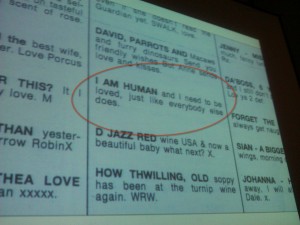
He submitted messages by fellow artists into the Valentine’s Day personals in the newspapers. Deller’s personal (above) was lyrics from a song by the Smiths, offbeat out of the song’s context. Higgs called it an “attempt to make work in the public domain.” Both the books projects and the Valentines personals he paid for out of his own pocket, while working as an administrative assistant in a London ad agency. (He noted at this point in the talk that he has curated a Jeremy Deller show coming up at Hayward Gallery (London) next year.
Higgs made his mark curating shows that demonstrated the YBAs weren’t the only game in town–an almost political sort of thing breaking up the Saatchi cartel-approach to art. (Higgs has curated more than 100 shows all in all).
After the London ICA he moved to San Francisco as curator of the Wattis Institute for Contemporary Art at California College of Arts and Crafts where among other things he placed art in non-art places like bulletin boards in hallways, and showed work that played with language, both persistent themes in his career. And since moving on to White Columns, he said he has redefined what the space is doing–tons of shows, publishing a fanzine every couple of months (another example of consistent interests through the years), and releasing records on occasion. “The idea is to be idiosyncratic,” he said, now that so many other spaces are serving as incubators for new talent, which was White Columns’ original defining role.



